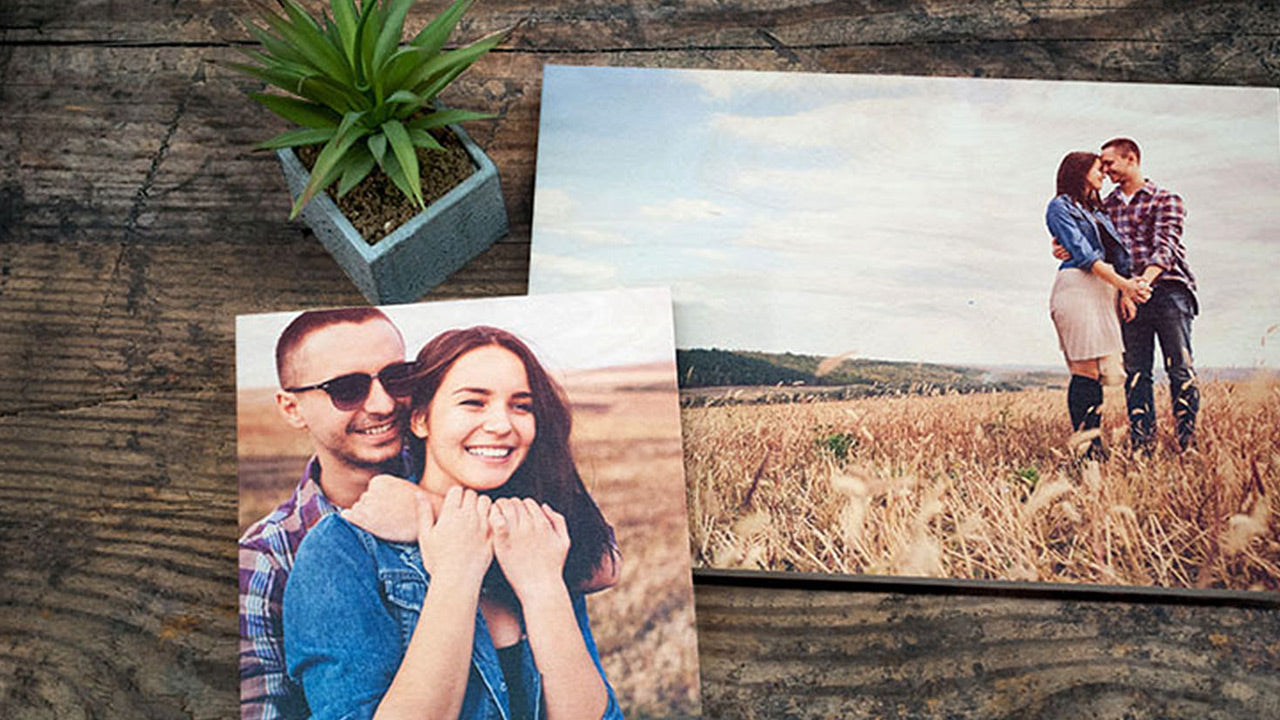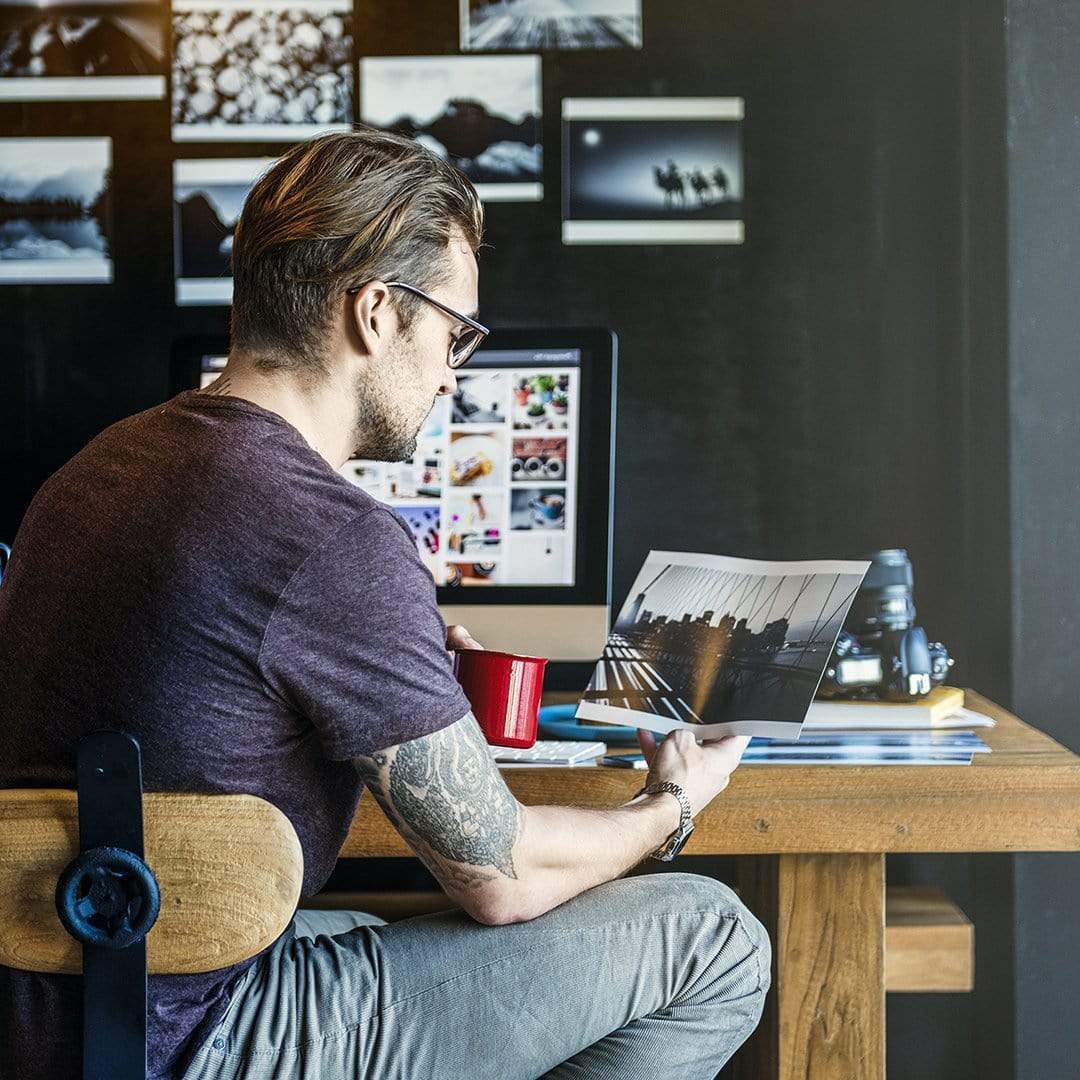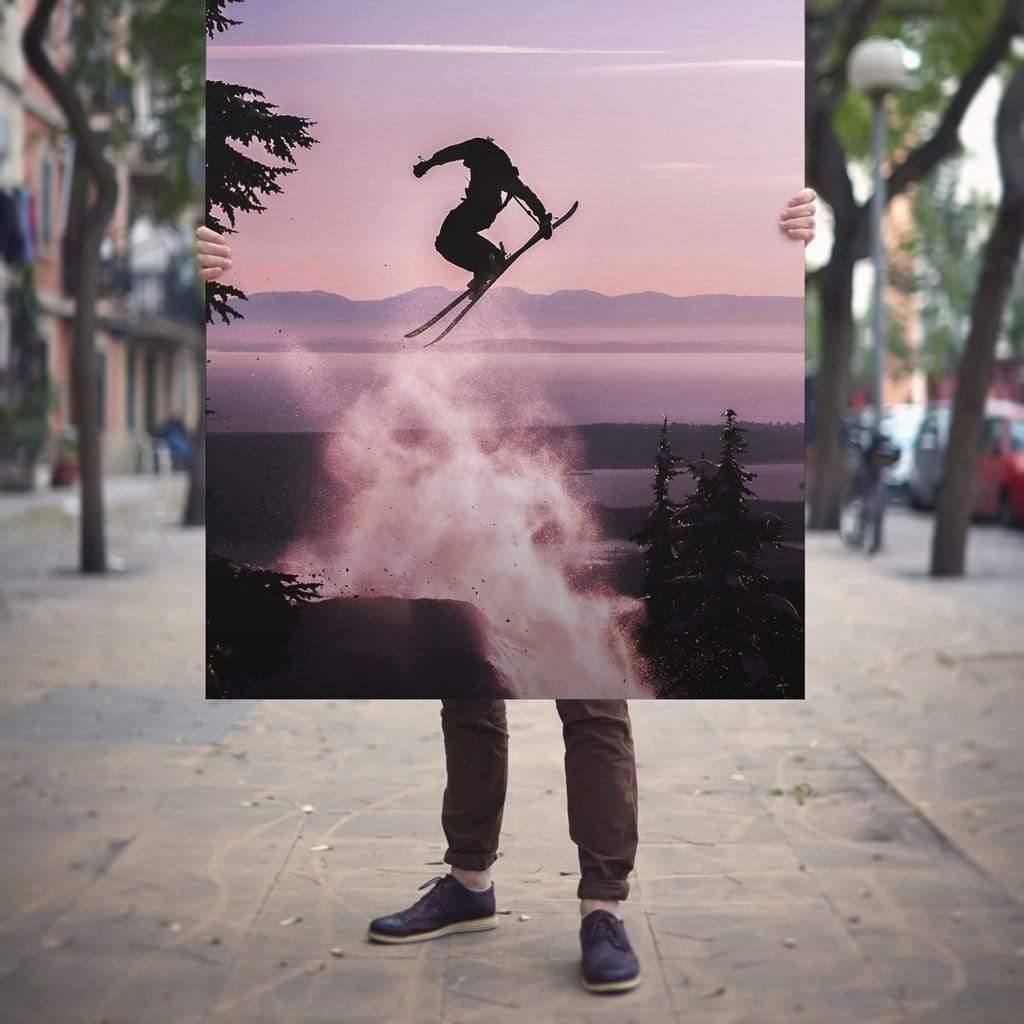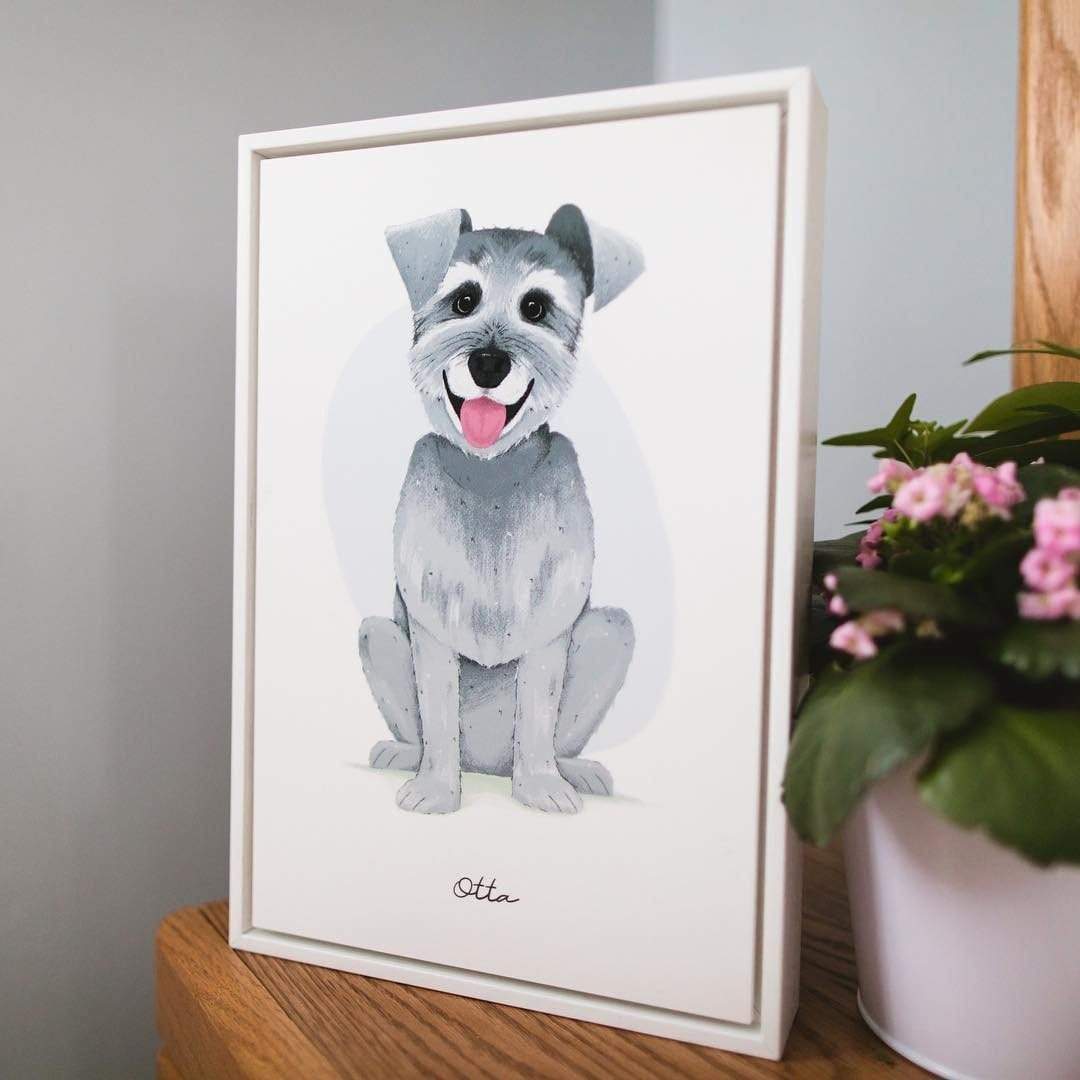You don’t need to have a professional DSLR camera to capture photos that turn into amazing prints—your smartphone camera will work!—but there are a few tips you should consider in order to avoid poor-quality prints.

To avoid poor-quality prints, there are four things you should consider:
- Your camera and its settings
- Your photography technique
- Your photo printer
- The product you’re printing your photo on
Let’s take a closer look at each of these points.
1. Your Camera
To create high-quality prints, you don’t need to invest in an expensive, professional DSLR camera. You can capture amazing photos with just a point-and-shoot camera or even your smartphone. For best results, go into your camera’s settings and choose the highest resolution possible. Read our Ultimate Guide to Photo Enlargements to learn more.
If you’re not shooting in manual mode, understanding your camera’s scene modes can also help you capture great images. Selecting the Landscape mode, for example, uses a small aperture so the camera will focus on objects in the distance. As this mode creates photos with the maximum depth of field possible, this option is also a good choice if you want to capture photos through a window because your camera won’t try to focus on the glass. Having a general knowledge of what each mode does makes it easier to capture the photos you want.

Although taking advantage of your camera’s settings can contribute towards getting a decent photo, it won’t improve your composition, sharpness, or clarity - all things that, if overlooked, can result in a poor quality print, which leads us to our next point.
2. Your Technique
Even if you’re capturing high-resolution images and you choose the best photo printer and products (more on that below), the quality of your prints will be poor if the photo itself is out of focus and poorly composed. Here are a few blog posts worth reading that will help you create sharp, interesting, and beautifully-composed photos:
The Rule of Thirds: A composition technique that is super easy to learn and just as easy to apply to your images to help you create better photos.
Shooting from Different Angles: It doesn’t matter if you’re photographing animals, people, or nature; the next time you find yourself taking photos, rather than simply pointing and shooting, try composing your shot down on one knee or standing on a chair. Why? Photographing your subject from a different angle can have a huge impact on the overall result of an image, making it much more interesting than the standard “head on” approach.
Including Texture: In the attempt to capture a great photo, a person will often consider things like lighting or various composition techniques. Texture is one element that is often neglected in photography. Adding texture in your photos can greatly enhance the visual impact. Since images are two-dimensional, including texture in your photography can add a sense of dimension to an otherwise flat photo.
Using Leading Lines: There are various ways to integrate lines into a photograph to help strengthen the overall composition and draw attention to a specific focal point. Leading lines can direct a person’s eye to a main focal point or, if used incorrectly, can draw the eye away from the subject or appear to cut a photo in half.

3. Your Printer
Using a poor-quality printer will result in a poor-quality print, it’s as simple as that. It doesn’t matter if you have the best photo in the world, if it’s printed using low-grade inks, equipment, and materials, the end result will be a low-grade print.
Posterjack is completely focused on producing quality photo art and being the best at it. We create everything in-house for optimum quality and continually invest in new equipment. We even have proprietary print software designed to deliver the best large-scale photo prints in the country. Our Canvas Prints, for example, are made with premium materials that are designed to last a lifetime. Other canvas printing companies use solvent-based printers and chemical inks which produce a low-quality product that will fade in less than 10 years. They also use liquid laminates which initially look good, but crack, fade, and turn yellow over time. Posterjack, on the other hand, prints photos on canvas using the Giclée method using original HP Vivera Latex inks, so photos will stay vibrant and will not fade for over 200 years.
Related: Top 5 Benefits of Canvas Printing with Posterjack
Posterjack has a great photo quality rating feature that will help you avoid poor-quality prints. When you upload your photo to the website, you will automatically receive a quality score based on your image and the print size you’ve chosen. If your score isn't as high as you would like, try a smaller print size. If your score is unsuitable, you will be unable to proceed with your order and will need to contact customer support for help. It’s just one more way Posterjack helps ensure you’re going to be happy with your print!

4. The Product
By now, you’re probably catching on that there’s a theme to avoiding poor quality prints: if you have only one element on this list, you will not have the best results; all four points must be present. With that in mind, can you guess what we’re about to say? You can have a great photo, use a great printer, but if you choose the wrong product for your image, you likely won’t be happy with the results.
Some products are only ideal with certain types of photos; with our Wood Prints, for example, we print your photo directly onto birch wood, so the natural tones and grain of the wood show through the image resulting in a totally unique photo art product - if you’re looking for a print with accurate colours, this wouldn’t be the product for you. Conversely, some products are extremely versatile and are a great choice for nearly any type of photo, like our Poster Prints or Gallery Boxes.
Here’s a summary of all the products Posterjack offers and if you’re unsure which product to print your photo on, Pairing Photos with Posterjack Products can help.

Doing It Right
It can be frustrating to have a photo that would’ve looked great printed if only it wasn’t out of focus, or to have the perfect shot only to discover it was printed using subpar materials. You can easily avoid poor-quality prints that are blurry, grainy, or produced on materials that will deteriorate over time, all you need to do is capture a great photo and choose the right photo printer and product - all of which is easy, now that you know how!


